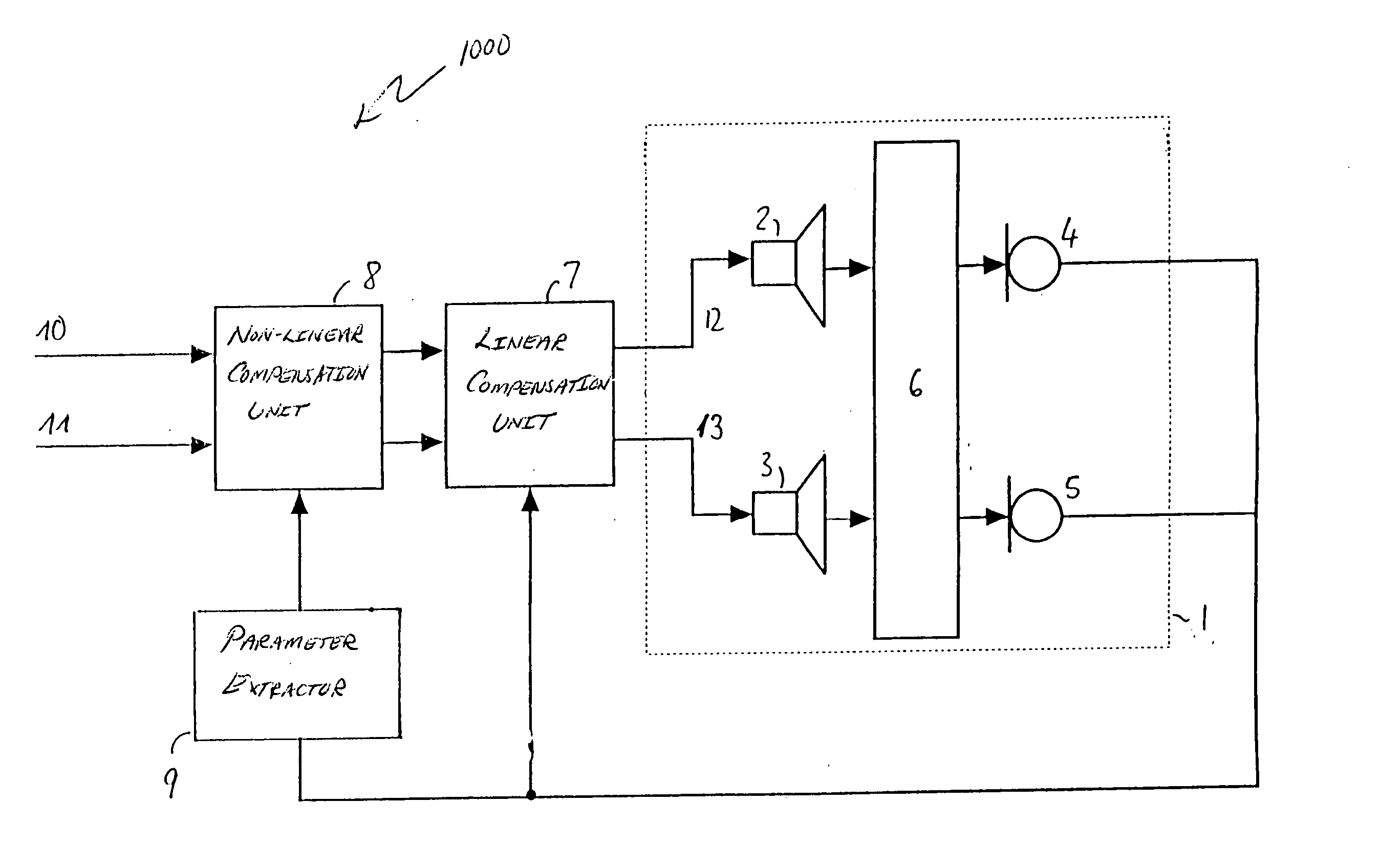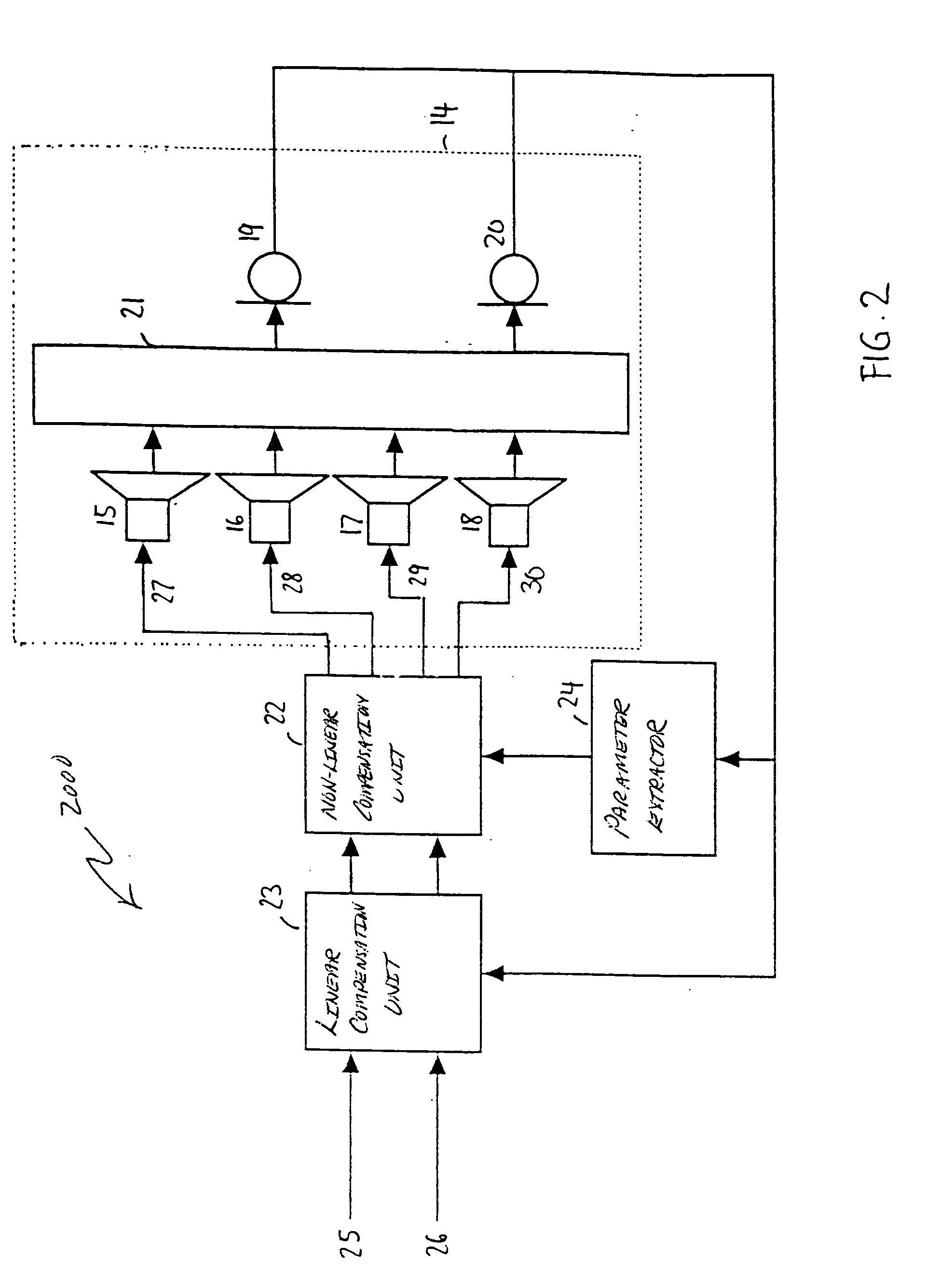Stereo audio-signal processing system
a stereo audio signal and processing system technology, applied in the field of loudspeakers, can solve the problems of unwanted alterations of the sound being reproduced, different response responses of the listening environment to different frequency sounds, and unwanted alterations of the listening environment, so as to reduce the amplitude of the error signal
- Summary
- Abstract
- Description
- Claims
- Application Information
AI Technical Summary
Benefits of technology
Problems solved by technology
Method used
Image
Examples
Embodiment Construction
FIG. 1 is a block diagram illustration of an embodiment of a stereo audio processing system 1000. The stereo audio processing system 1000 is operated with a room-loudspeaker system comprising two loudspeakers 2, 3 located in a room 1. Two microphones 4, 5 are positioned within the room to receive acoustic signals from the loudspeakers 2, 3. The acoustic paths between each of the loudspeakers 2, 3 and each one of the microphones 4, 5 have respective transfer functions represented by a transfer functions matrix 6. The loudspeakers 2, 3; the microphones 4, 5; and the room 1 form a so-called loudspeaker-room-microphone system.
The loudspeakers 2, 3 are driven by the stereo processing system which comprises a linear compensation unit 7 and a non-linear compensation unit 8. Both compensation units 7, 8 are controlled by output signals of the microphones 4, 5. The non-linear compensation unit 8 is controlled via a parameter extractor 9, which generates control signals provided on a line 10...
PUM
 Login to View More
Login to View More Abstract
Description
Claims
Application Information
 Login to View More
Login to View More - R&D
- Intellectual Property
- Life Sciences
- Materials
- Tech Scout
- Unparalleled Data Quality
- Higher Quality Content
- 60% Fewer Hallucinations
Browse by: Latest US Patents, China's latest patents, Technical Efficacy Thesaurus, Application Domain, Technology Topic, Popular Technical Reports.
© 2025 PatSnap. All rights reserved.Legal|Privacy policy|Modern Slavery Act Transparency Statement|Sitemap|About US| Contact US: help@patsnap.com



